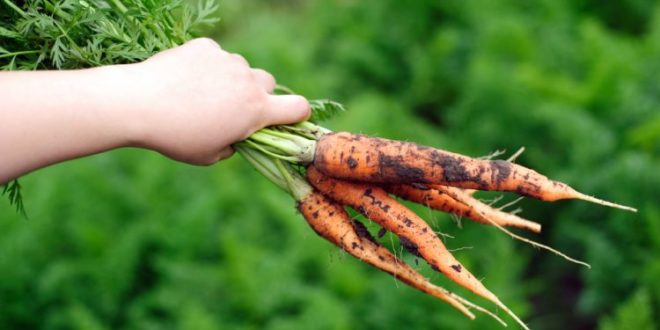A beautiful vegetable garden is something that many of us dream about. It is a place where you get to grow your very own vegetables and harvest them to use the freshest ingredients. Just the idea of getting fresh produce from your backyard is enough to motivate you to get started.
The good news is that starting a vegetable garden is easier than you think. With just a bit of effort and care, you can have a thriving kitchen garden in no time. Besides, more people have a kitchen garden today than ever before. The following steps will help you get started.
Step No. 1: Start at the Right Time
When it comes to starting a vegetable garden, you have to start at the right time. Generally, early spring is your best option. However, you can even plan ahead. Determine the size of the plot that you want to work on. Choose a size that is easy to manage.
Preparation and maintenance are essential for a large vegetable garden. Hence, you should begin with a smaller plot. Produce a variety of vegetables. You can even use containers for gardening as they are simple to work with.
Step No. 2: Select the Right Position for the Kitchen Garden
Next, you have to select the right position to start your kitchen garden. The light levels and amount of space available will influence the growing spot. You also have to think about how much room each plant would require to grow in a pot or raised bed.
Although the plants have not grown already, you still have to understand that they will get cramped later on. The seed packet will help you determine the amount o space each plant would need. Then, you can select the right contains and pots.
To select the best position, you have to consider a sunny spot, wind protection, and fertile soil (enriched with compost).
Step No. 3: Determine the Crops You Want to Grow
After you have determined the right spot for your plants, you have to determine what you would like to grow. It is a good idea to grow something that you love. Think about your favorite edibles and list them down. Always go for different types of fruits and vegetables.
Next, you have to consider the available space and growing conditions to narrow down your options. Keep things simple as a beginner. Start small and extend your garden as you gain more experience. We have shared which vegetables to grow towards the end of the post.
Step No. 4: Contemplate How to Achieve the Best Value
A kitchen garden provides you with the opportunity to grow organic. It is wise to work out how to achieve the best value from it. Go with high-value crops that do not require a lot of space. For example, tomatoes tend to be high maintenance but produce a ton of fruit.
When growing a vegetable garden, you also have to ensure time minimization and cost-effectiveness for the best results. Select crops that you find expensive and grow them. Some notable herbs that you can grow include rosemary, parsley, thyme, sage, and mint.
Step No. 5: Determine Your Soil Type and Prepare It
Next, you have to get your soil up to scratch. Start by testing its pH levels. You can easily get a soil testing kit. Clear out all the weeds to make way for your crops. Let the soil warm up. Dig in organic matter to improve the soil quality, such as compost or well-rotted manure.
Step No. 6: Grow Your Vegetable Garden in Raised Beds
Raised beds are the perfect option for growing vegetables. They are filled with loamy soil, which is widely available at any garden center.
Besides, they are ideal if your garden does not have good quality soil. Raised beds allow for good drainage, prevent soil compaction, and increase soil temperature.
Step No. 7: Determine the Kitchen Garden Layout
To create the right aesthetic, you should determine the kitchen garden layout. The best design is one that suits your space and needs. You can divide the vegetable garden into different sections, one for peas and beans, one for herbs and salads, one for root vegetables, and one for a mixture.
Step No. 8: Provide Access to the Vegetable Garden
To easily weed, plant, and harvest your vegetable garden, you need to provide access. It is best to avoid placing dense flower borders or long grass right next to the plot. Access pathways make it easier to look after your garden.
Step No. 9: Plant the Seeds
Now, you just have to plant the seeds.
Seeds allow vegetable garden enthusiasts to grow the perfect garden. They are cheap and easy to use. It makes sense to use a combination of seeds and plants. Once the soil warms up, you should be able to sow the vegetable seeds directly.
Step No. 10: Maintain Your Garden
Finally, all you have to do is maintain your garden.
Take good care of your vegetable garden by regularly watering the crops, pulling out weeds, providing organic matter to the soil, and ensuring proper sunlight is provided. You can read the best garden maintenance tips for the best outcome.
What to Grow In Your Vegetable Garden?
- Salad Leaves
- Broad Beans
- Tomatoes
- Carrots
- Beetroots
- Potatoes
- Chards
- Gooseberries
- Apples
- Strawberries
- Currants
- Calendulas
- Herbs
- Radishes
- Spring Onions
- Cucumbers
- Peppers
Create a Bountiful Vegetable Garden
Once you have gone over our post, you will know how to start your very own vegetable garden. From starting at the right time to ensuring maintenance, each step will guide you through the process.
Whether you want to create a traditional vegetable garden or a modern one, always go with a design that is easy to look after. The vegetables you harvest will change your outlook on life.
Pro Tip: Hire professional Electrical and Gas Safety Engineers
It is important that you hire a gas safety engineer. The last thing you want is for your vegetable garden to go to waste. Hire an engineer who possesses a valid gas safety certificate and electrical qualifications!
 Gardeners Club The Gardeners Club is a free to join online club for everyone with an interest in gardening and gardens.
Gardeners Club The Gardeners Club is a free to join online club for everyone with an interest in gardening and gardens.





